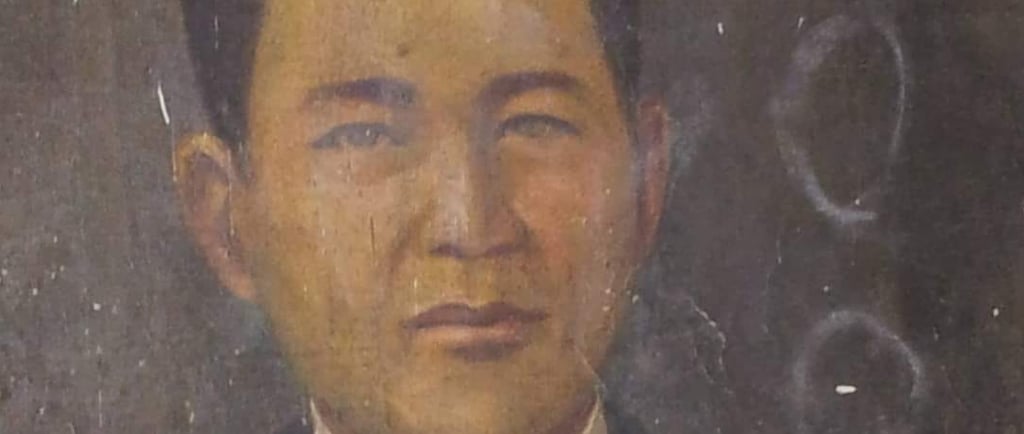The Legacy of Perfecto Mistas Petinglay
SAN REMIGIO
Rosalinda Velasco Petinglay
10/22/20256 min read


Perfecto Mistas Petinglay is a man of wisdom, multilingual grace, and devotion to family and land. I have not seen my grandfather but I have heard stories about him from my grandmother and from my uncles and aunties.
His father was Vicente Pe Tinglay (also known as Pe Tiao Lai) a Chinese trader from Amoy, China. Locally he was called "Insik Tinglay" which literally means Chinese Tinglay. My great grandfather's picture used to hang on the wall of my grandmother's humble living room, in the old ancestral bamboo house in San Remegio, Antique. His picture greeted and watched in silence all who was visiting there. He was fair skinned, high nose, almond-shaped eyes and sported a Chinese queue. As a kid I thought he looked like a beautiful girl with long braided hair and wondered why my nose is a little flat, my skin darker, and my hair wavy and I secretly wished I were fair yellow-skinned, high-nosed and had long straight hair like my great grandfather from China.
I learned at age 62 years that my great grandfather chose Liberata Mistas a native "ati" for a wife. The ati tribe of Antique is a dying indigenous tribe living in the mountains like nomads. They are short, dark skinned, flat nosed and with curly or kinky hair. No wonder that I and my siblings were born with wavy hair including the boys. Ati and Chinese blood run in our veins.
He wakes up very early in the morning to pray and plan his work. A street is named after my grand father. It is the longest street in San Remegio, Antique.
After his dream of making Calag-itan the best municipality was realized, he did not seek another term as Municipal President. Instead, he ran for Municipal Councilor and was elected.
Many municipal presidents and residents have come and gone some may still be living and could testify to the ability, initiative and resourcefulness of Perfecto Pe Tinglay. During the convention of Municipal Presidents of Antique, he was elected Speaker of that body notwithstanding that he was the municipal president of a poor municipality, because of his intelligence, ability and leadership. He could speak English and Spanish fluently and could debate with anyone on various subjects. He had for his private library the Bible, The Faith of our Fathers by Cardinal Gibbons, the Spanish text of Rizal's Noli Me Tangere and El Filibusterismo. He was an avid reader of the Philippines Free Press which had its Spanish Section at that time.
As a father he loved his family and always made it a point to bring something for his children home. But beyond material things he gave his children the things he would have wanted most if he had the means and sound education. His dream for his children was not fully realized at the time of his early death, but was later fulfilled and all his children were employed in the government in different capacities.
He was an optimist and no deep trouble or calamities ever disturbed his mind. When his house at the Old Town was burned including his granary and all the family belongings, he never was seen to be affected. "With God nothing is impossible" was his motto and he lived in it and believed in that to the end of his day.
In 1924, when he ran for the office of Municipal President of San Remegio, he won although his opponents were recognized leaders of the town. His political career as Municipal President of the town of San Remegio is well remembered for the many important and lasting improvements he was able to achieve.
The opening of Barrio Schools
The construction of Municipal and Provincial Roads
The transfer of the site of the Poblacion from the Old Town to the new site at Calag-itan.
The construction of municipal building mainly from limited funds and voluntary labor of the residents.
The winning of boundary disputes between San Remegio and Sibalom.
The activation of coconut planting, abaca, lumbang and fruit trees.
After his three year term as Municipal President he ran again for reelection and the people voted him again for office. As municipal President and head of the town, he was imbued with zeal for the progress and prosperity of his people. He foresaw the eventual opening of the virgin lands of San Remegio, and led a group of officials to explore the undeveloped but fertile regions of San Remegio like Cabladan and Aningalan, and Tubudan.
Before his term expired, he transferred the Municipal Offices to Calag-itan in the New Municipal Building. It was also said that he arranged the purchase of the lot in Nasuli to be used as Municipal Cemetery. Unfortunately, he died before the cemetery was built. His remains can not be located probably due to floods and soil erosion as he was buried in the ground with a temporary marker.
My grandfather Perfecto Pe Tinglay was born on May 6, 1890 and had one brother named Tomas. He never went to school but he engaged in self-study and was so smart he spoke Spanish, English, and the local vernacular as well. He liked reading the bible. I believed he was well to do as a kid that when he grew up he owned vast land property in San Remegio and kept a rice and corn granary in Bagumbayan, the old town of San Remegio, Antique.
He became the first elected Municipal Mayor of San Remegio, Antique in 1925 and served until 1931 and as such, he donated the land on which the old Municipal Hall was built. He donated the land on which the local High School (St. Vincents) was built. He donated the land on which the longest road in town stretches. All his donations took effect without legal documentations and people of today do not give him enough credit because they don't know. He was so generous he became financially poor but rich in love. As Municipal Mayor he fed all citizens going to town every Tuesday to shop for their weekly supplies. Every Tuesday, Market Day he would butcher pigs and chickens to make sure all who came from the remote places were well fed because these marketers had to walk under the heat of the sun for about 12 miles and some had to cross rivers to get to town.
Before his election as Municipal Mayor he entered the government service while still young and served as sanitary inspector, veterinarian, and Chief of Police of San Remegio. in all of his offices in which he was employed he showed exceptional ability in dealing with people and he made many friends. But it was also in the course of his government employment that he showed his courage when as Chief of Police he had the law and ordinance obeyed by every citizen without exception. He and another municipal official nearly fought when he ordered the stray pig of that official to be caught and put in the municipal pound
Major Achievements:
Founded barrio schools to expand education into remote areas.
Built key municipal and provincial roads, improving transport and trade.
Transferred the town center (Poblacion) from the Old Town to Calag-itan, a crucial development strategy.
Constructed the municipal hall, relying largely on limited funds and volunteer labor.
Resolved boundary disputes with neighboring Sibalom.
Promoted agricultural growth, introducing coconut, abaca, lumbang, and fruit tree cultivation.
Explored fertile frontier areas, such as Cabladan, Aningalan, and Tubudan, promoting future settlement.
His deep personal generosity became one of his most admired traits. He donated parcels of land for public use—including the sites of the Municipal Hall, the local high school, and the town’s longest road. These gifts, made without legal deeds, are often uncredited today, but they were foundational to the growth of modern San Remegio.
On Market Days (every Tuesday), Mayor Pe Tinglay personally ensured that people from distant barrios who walked miles—sometimes under scorching sun or crossing rivers—were fed at his own expense. He slaughtered pigs and chickens to make meals available for all. His philosophy was that no one under his care should go hungry, especially the poor and marginalized.
Toward the end of his term, he successfully moved the entire municipal government to Calag-itan and secured land in Nasuli for the town's future cemetery. Unfortunately, he passed away on December 13, 1934, before the cemetery could be built.
He was buried with a temporary marker, and over time, flooding and erosion caused his gravesite to be lost. Yet his memory remains vividly alive in the hearts of those who know his story.
Legacy
Pe Tiao Lai’s life was a testament to integrity, selflessness, and visionary leadership. Though he died at the early age of 44, he left behind a legacy of public service and love for his people. His children later followed in his footsteps, all serving in the government in various capacities—a quiet fulfillment of the dream he could not fully realize in his lifetime.
He lived by the words: “With God, nothing is impossible.” And with no formal education, no wealth left in the end, and no legal claims to fame, Perfecto Pe Tinglay / Pe Tiao Lai remains one of San Remegio's greatest sons.
